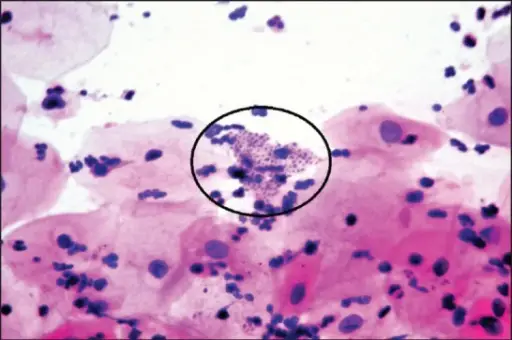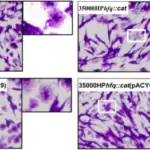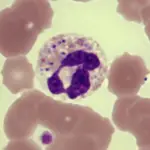Granuloma Inguinale is a genital ulcerative disease caused by the intracellular gram-negative bacterium Klebsiella granulomatis.
What is the Pathology of Granuloma Inguinale?
The pathology of granuloma inguinale is:
-Etiology: The cause of granuloma inguinale is intracellular gram-negative bacterium Klebsiella granulomatis.
-Genes involved: Not applicable.
-Pathogenesis: The sequence of events that lead to granuloma inguinale includes bacterial infection associated with sexually transmitted disease or via childbirth with infected genital tract
-Morphology: The morphology associated with granuloma inguinale shows papules or nodules that arise at the site of inoculation. The nodule is soft, often pruritus and erythematous, and eventually ulcerates.
-Histology: The histology associated with granuloma inguinale shows massive plasma cells infiltrate without lymphocytes in granulation tissue.
How does Granuloma Inguinale Present?
Patients with granuloma inguinale typically. The symptoms, features, and clinical findings associated with granuloma inguinale include destroyed genital tissue, beefy-red bumps, and sores in the anal area.
How is Granuloma Inguinale Diagnosed?
Granuloma inguinale is diagnosed by biopsy.
How is Granuloma Inguinale Treated?
Granuloma inguinale is treated by antibiotics trimethoprim-sulfamethoxazole, doxycycline, erythromycin, and ciprofloxacin.
What is the Prognosis of Granuloma Inguinale?
The prognosis of granuloma inguinale is good if appropriate treatment is started early. If left untreated, it can cause significant scarring and tissue destruction.



